
Natural materials, subtle colours, mixed with organic forms combine to create an inviting bathroom in which to while away the hours.
• A cosy bathroom offers a place of refuge from the hustle and bustle of everyday life.
• Natural, high-quality materials such as ceramics and wood are pleasant to touch.
• Creative bathroom design for rooms of any size.
• Sustainability: durable, water-saving, and recyclable products
• Design and technical features to ensure enhanced hygiene in the bathroom.
The bathroom is no longer merely a place for a daily care and health routine. It has become a place of refuge from the hustle and bustle of everyday life.
In the same way that the kitchen has converged with the living room, the bathroom is now becoming an extension of the bedroom. Room boundaries are becoming more fluid; as the washing area and bathtub can be creatively located in the centre of the bedroom, with only the toilet being physically separated. Such floating spaces work because sanitary objects are now designed and installed in a similar fashion to furniture – as decorative standalone features crafted from natural materials such as ceramics, wood, and stone with a look and feel that creates a feeling of sanctuary.
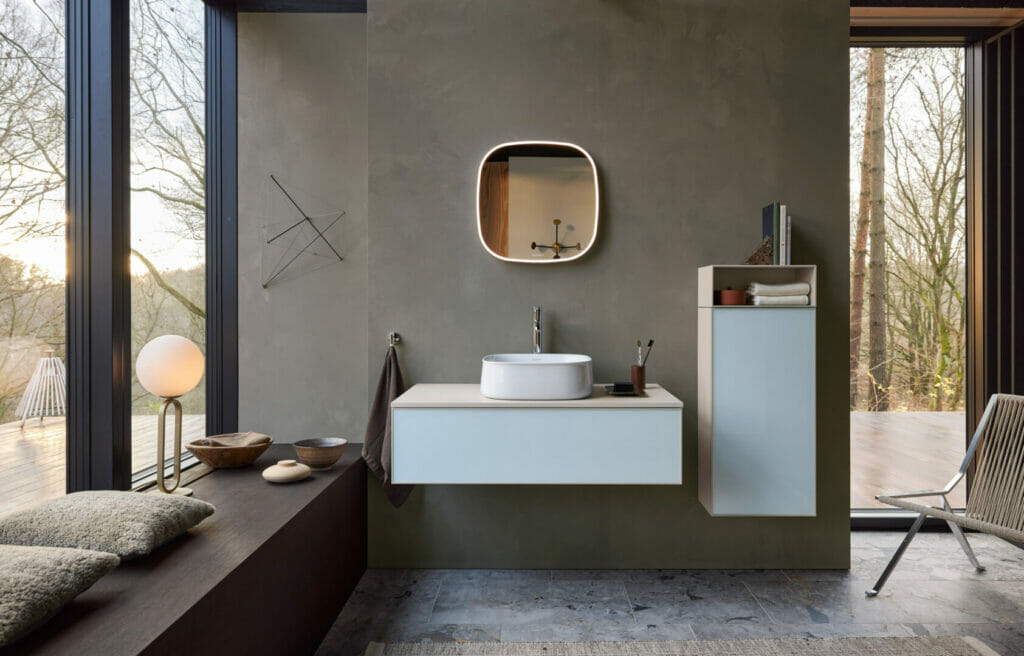
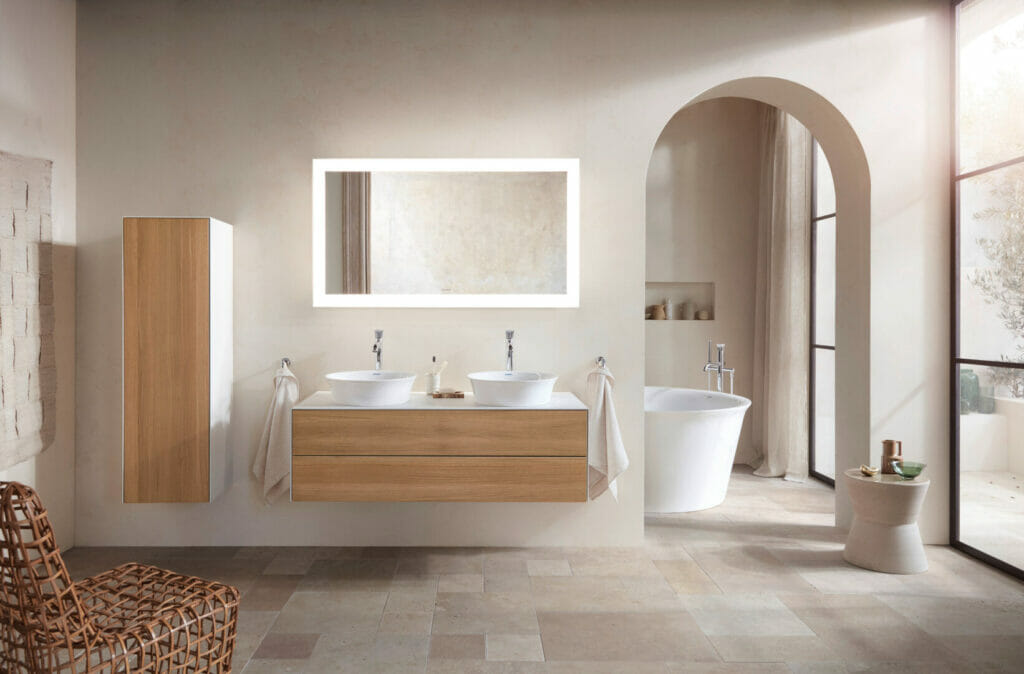
THE BATHROOM AS A LIVING AREA
Contemporary bathrooms are being designed in a homely style with sanitary objects and bathroom furniture, being entwined with soft furnishings, lamps, textiles, and accessories.
Specific shapes and materials combine with calming earth tones specifically to create a cosy ambiance – enhanced with plants bringing a touch of outdoors indoors.
Inspiration from nature in interior design are hallmarks of Scandinavian design and Japanese aesthetics. The Zencha bathroom collection from Duravit brings these two concepts into harmony.
Designer Sebastian Herkner crafted the sanitary objects and bathroom furniture from natural materials such as ceramics, wood, and textured glass. Whilst the modular storage furniture with its delicate edges and shadow gaps exudes a slightly more austere look, with the freestanding bathtub giving the impression of a large bowl that culminates in a graceful edge with a gentle outward curve.
Duravit’s White Tulip bathroom collection features organic forms combined with furniture in natural solid wood surfaces and high-gloss or satin-matt lacquers to create harmony and softness in the interior. Designed by Philippe Starck, the forms of the sanitary objects, faucets, and furniture are reminiscent of the silhouette of a tulip in bloom.
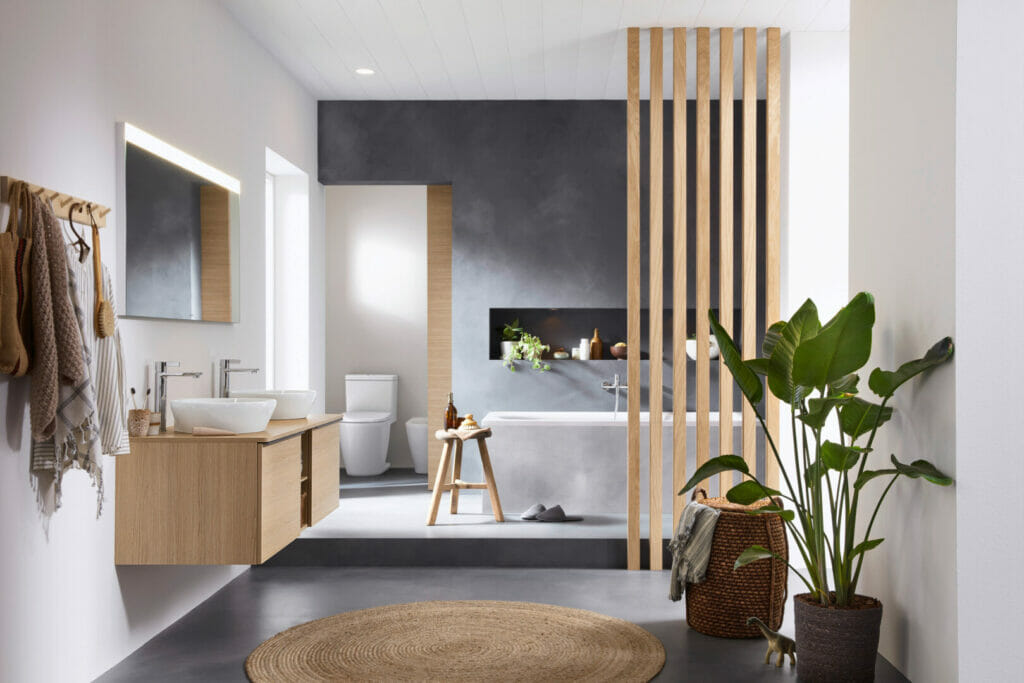
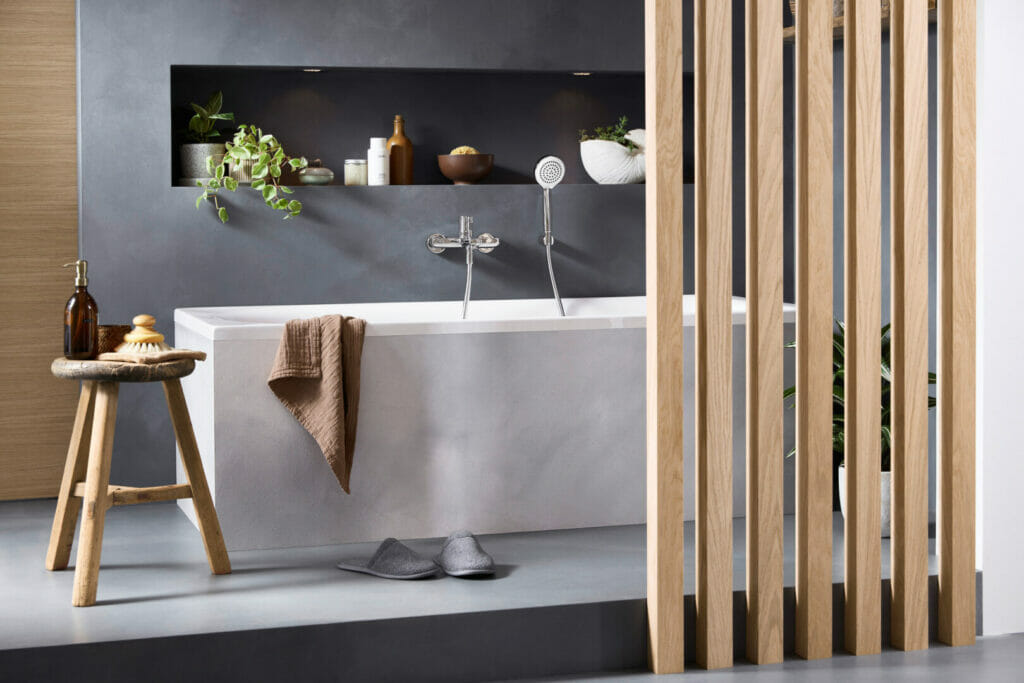
NATURAL LIFESTYLE
Inspiration from nature is a trend that is here to stay in interior design. As a material, wood surfaces are appealing to the touch with aesthetic and tactile qualities that make it suited to a natural furnishing style like no other material.
Wood is also an established feature of the bathroom. In D-Neo, Belgian designer Bertrand Lejoly has created a complete bathroom range that offers no-fuss vanity units and semi-tall cabinets in a range of oak and walnut furniture finishes.
SMALL AND TASTEFUL
Increasing numbers of manufacturers now offer sanitary objects, and furniture smaller sizes so that bathrooms with compact measurements can easily be transformed into living spaces.
Bathrooms in large cities are often only a few square meters in size. Mirrored cabinets, storage furniture, and washbasins with storage space also play their part in maintaining order in the bathroom. Free surfaces can accommodate eye-catching decorative pieces such as jewellery boxes, vases, and bowls.
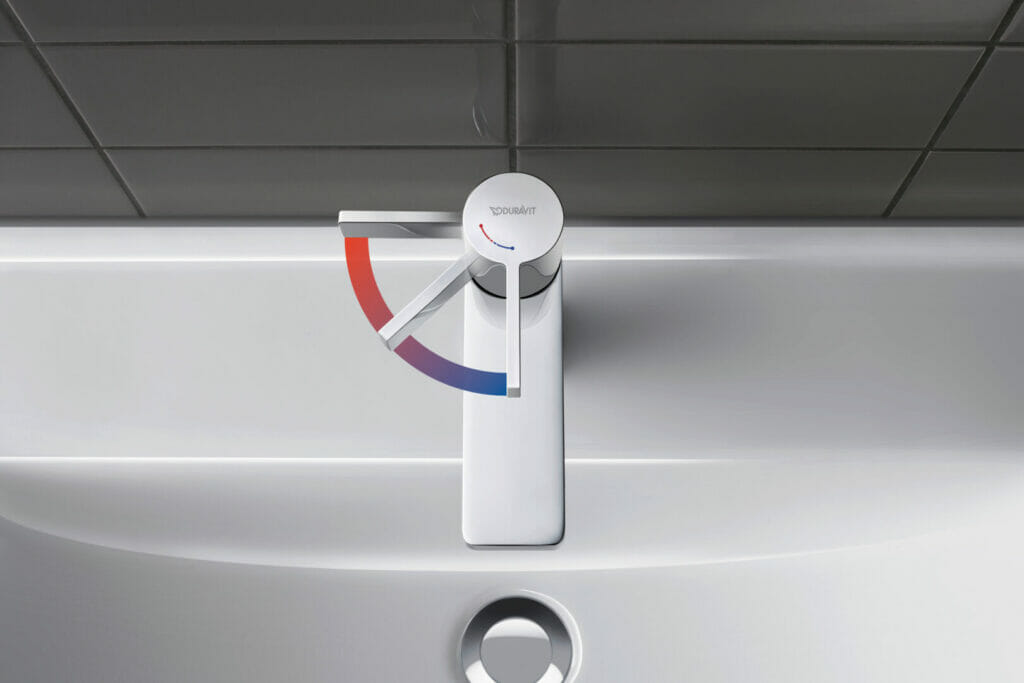
PRESERVING RESOURCES
Thinking and acting in a sustainable manner has always been important at Duravit as such they offer a range of bathroom solutions that consume less water than conventional ones or are made from sustainable materials.
Sustano is the first ever recyclable shower tray to be marketed from the German manufacturer. Made from the sustainable mineral material DuroCast Nature, it not only has a high surface hardness and density, but the shower trays can either be returned to the manufacturer or a local recycling centre after the end of their useful life.
The minimalist Tulum faucet range by Philippe Starck saves energy and water because it is equipped with a FreshStart function. In the central position, this only produces cold water to start with. The flow rate limited by the MinusFlow function additionally helps save this precious resource. In parallel to its existing sustainable product range, Duravit has embedded the goal to be climate-neutral by 2045 in its company targets.
HYGIENE IN THE BATHROOM
Since the pandemic more attention has been paid to hygiene, especially in the bathroom. Thorough cleanliness is ensured by easy-to-clean surfaces such as ceramics or DuroCast Nature. Toilets in the White Tulip range from Philippe Starck are equipped with the innovative HygieneFlush technology which cleans the entire inside of the toilet. The ceramic glaze HygieneGlaze ensures that approx. 90 percent of bacteria have been eliminated within six minutes, rising to approx. 99.9 percent after 24 hours.
The Soleil by Starck bathroom series, toilet has a slightly protruding, delicate lid. This design feature means the lid is easily griped without touching the seat or ceramic.
